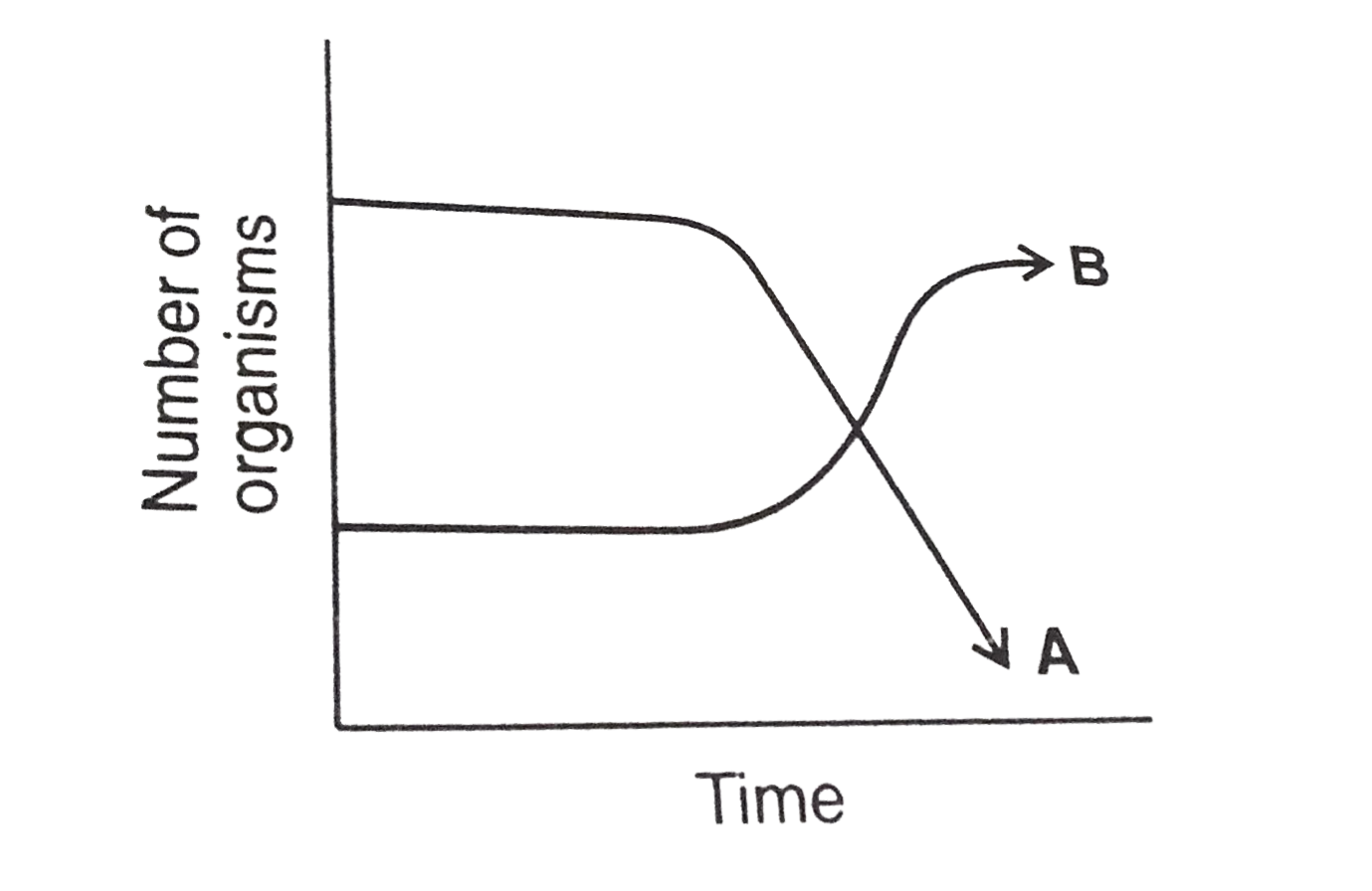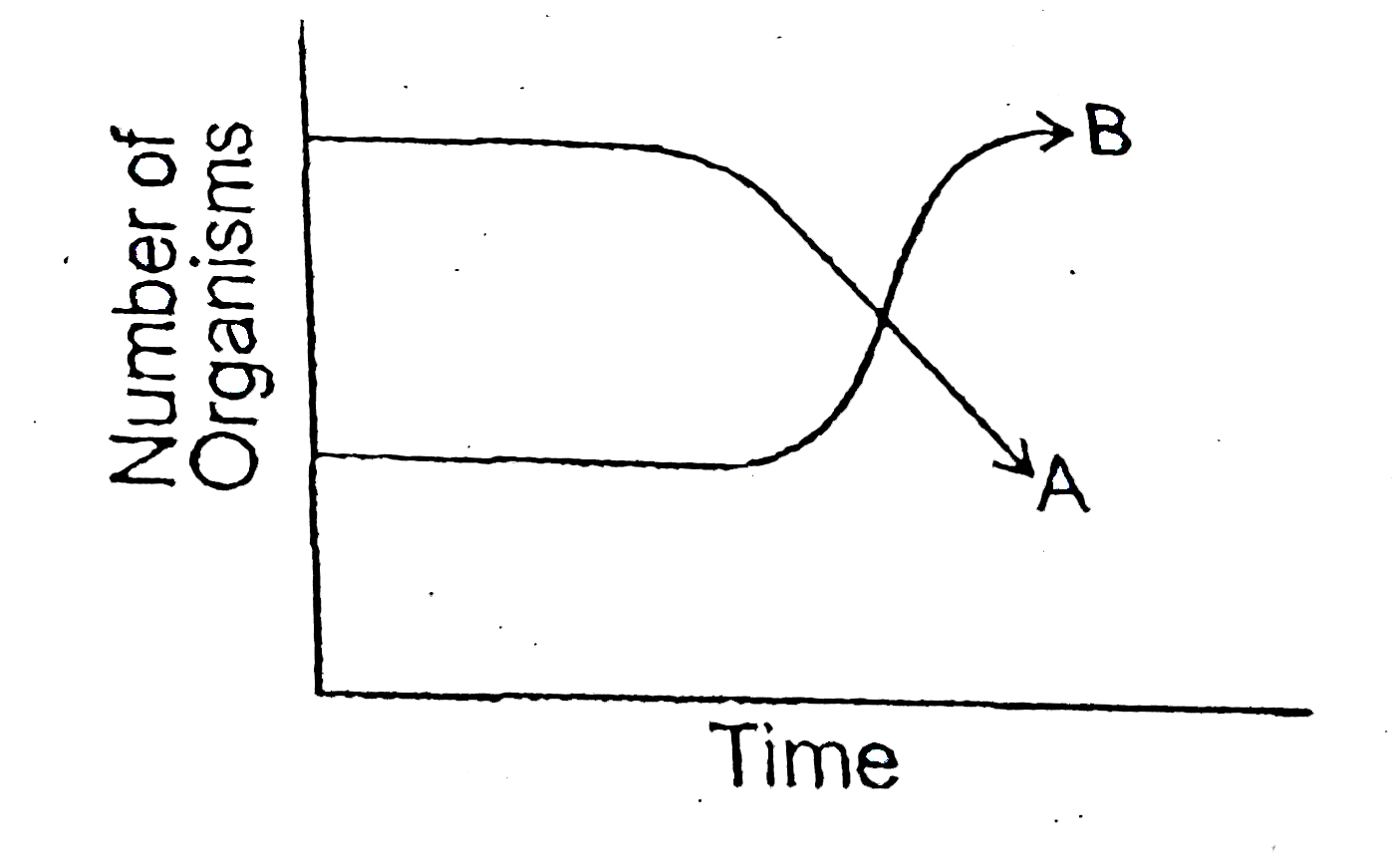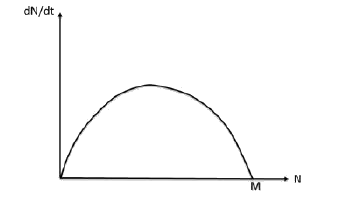The graph below shows the changes in two populations of herbivores in a grassy field. A possible reason for these changes is that

all of the plant populations in this habitat decreased
populations B completed more successfully for food than population A did
population A produced more offspring than population B did
population A consumed the members of population B
The correct Answer is:B
Step by step video & image solution for The graph below shows the changes in two populations of herbivores in a grassy field. A possible reason for these changes is that by Biology experts to help you in doubts & scoring excellent marks in Class 12 exams.
Updated on:21/07/2023Topper's Solved these Questions
- ORGANISMS AND POPULATIONS BOOK - A2ZCHAPTER - ORGANISMS AND POPULATIONS EXERCISE - SECTION-C PREVIOUS YEARS' EXAMINATION QUESTIONS (ASSERTION AND REASON TYPES QUESTIONS)
9 Videos
- ORGANISMS AND POPULATIONS BOOK - A2ZCHAPTER - ORGANISMS AND POPULATIONS EXERCISE - Section D: Chapter-end Test
50 Videos
- ORGANISMS AND POPULATIONS BOOK - A2ZCHAPTER - ORGANISMS AND POPULATIONS EXERCISE - SECTION-C PREVIOUS YEARS' EXAMINATION QUESTIONS (NEET/AIPMT Questions)
85 Videos
- MOLECULAR BASIS OF INHERITANCEBOOK - A2ZCHAPTER - MOLECULAR BASIS OF INHERITANCEEXERCISE - Section D: Chapter -end Test
50 Videos
- PRINCIPLES OF INHERITANCE AND VARIATIONBOOK - A2ZCHAPTER - PRINCIPLES OF INHERITANCE AND VARIATIONEXERCISE - SECTION A : TOPICWISE QUESTIONS ((TOPIC 1: MENDEL'S LAW OF INHERITANCE)
22 Videos
Similar Questions
Knowledge Check
The following graph depicts changes in two populations (A and B) of herbivores in a grassy field. A possible reason for these changes is that :
 ABoth plant populations in this habitat decreasedBPopulation A produced more offspring than population BCPopulation B competed more successful for food than population ADPopulation A consumed the members of population B
ABoth plant populations in this habitat decreasedBPopulation A produced more offspring than population BCPopulation B competed more successful for food than population ADPopulation A consumed the members of population BThe following graph depicts changes in two populations (A and B) of herbivores in a grassy field. A possible reason for these changes is that
 APopulation A produced more offspring than population BBPopulation A consumed the members of population BCBoth plant populations in this habitat decreasedDPopulation B competent more successfully for food than population A
APopulation A produced more offspring than population BBPopulation A consumed the members of population BCBoth plant populations in this habitat decreasedDPopulation B competent more successfully for food than population AThe following graph depicts changes in two populations (A and B) of herbivores in a grassy field. A possible reason for these changes is that
 APopulation A produced more offspring than population BBPopulation A consumed the members of population BCBoth plant populations in this habitat decreasedDPolpulation B competed more successfully for food than population A
APopulation A produced more offspring than population BBPopulation A consumed the members of population BCBoth plant populations in this habitat decreasedDPolpulation B competed more successfully for food than population A
Give the formula for the change in population size .
View SolutionWhat are the components of population change?
View SolutionGive the determinants of population change?
View SolutionChanging population is -
View SolutionIn the graph below. where N is population size and tis time. M represents

View Solution
